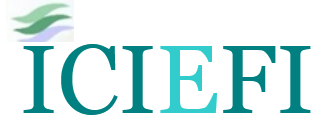Exploring Reluctance in Halal Food Awareness among Millennials: A Modified TPB Approach
Abstract
Keywords
Full Text:
PDFReferences
Afandi, M. Y., Hasanaha, I., Indrayania, N., Saputria, S. W., & Arsyi, H. S. (2022). The Relationship between Religiousity and New Product Adoption: Case Study on Muslim Students in Yogyakarta. Global Review of Islamic Economics and Business, 10(1), 41–50.
Ajzen, I. (2002). Perceived behavioral control, self-efficacy, locus of control, and the theory of planned behavior. Journal of Applied Social Psychology, 32(4). https://doi.org/10.1111/j.1559-1816.2002.tb00236.x
Ajzen, I. (2020). The theory of planned behavior: Frequently asked questions. Human Behavior and Emerging Technologies, 2(4). https://doi.org/10.1002/hbe2.195
Ajzen, I., & Fishbein, M. (2021). The Influence of Attitudes on Behavior. The Handbook of Attitudes, 187–236. https://doi.org/10.4324/9781410612823-13
Ali, A., Ali, A., Xiaoling, G., Sherwani, M., & Hussain, S. (2018). Expanding the theory of planned behaviour to predict Chinese Muslims halal meat purchase intention. British Food Journal, 120(1). https://doi.org/10.1108/BFJ-05-2017-0278
Awan. (2015). Management Research Review For Authors. Management Research Review, 38(2). https://doi.org/10.1108/MRR-08-2013-0185
Aziz, Y. A., & Chok, N. V. (2013). The Role of Halal Awareness, Halal Certification, and Marketing Components in Determining Halal Purchase Intention Among Non-Muslims in Malaysia: A Structural Equation Modeling Approach. Journal of International Food and Agribusiness Marketing, 25(1), 1–23. https://doi.org/10.1080/08974438.2013.723997
Bashir, A. M. (2019). Effect of halal awareness, halal logo and attitude on foreign consumers’ purchase intention. British Food Journal, 121(9), 1998–2015. https://doi.org/10.1108/BFJ-01-2019-0011
Chawla, D., & Joshi, H. (2019). Consumer attitude and intention to adopt mobile wallet in India – An empirical study. International Journal of Bank Marketing, 37(7). https://doi.org/10.1108/IJBM-09-2018-0256
Eagly, A. H., & Chaiken, S. (1995). Attitude strength, attitude structure, and resistance to change. In Ohio State University series on attitudes and persuasion, Vol 4.
Fathoni, M. A. (2020). Potret Industri Halal Indonesia: Peluang dan Tantangan. Jurnal Ilmiah Ekonomi Islam, 6(3), 428. https://doi.org/10.29040/jiei.v6i3.1146
Febriyantoro, M. T. (2020). Exploring YouTube Marketing Communication: Brand awareness, brand image and purchase intention in the millennial generation. Cogent Business and Management, 7(1). https://doi.org/10.1080/23311975.2020.1787733
Gottems, L. B. D., Carvalho, E. M. P. de, Guilhem, D., & Pires, M. R. G. M. (2018). Good practices in normal childbirth: Reliability analysis of an instrument by cronbach’s alpha. Revista Latino-Americana de Enfermagem, 26. https://doi.org/10.1590/1518-8345.2234.3000
Hair, Jr, J. F., Black, W. C., Babin, B. J., Anderson, R. E., & Tatham, R. L. (2010). SEM: An introduction. Multivariate data analysis: A global perspective. A Global Perspective, 5(6).
Hair, J. F., Ringle, C. M., & Sarstedt, M. (2011). Journal of Marketing Theory and Practice PLS-SEM: Indeed a silver bullet. Journal of Marketing Theory and Practice, 19(2).
Hair, J. F., Sarstedt, M., Hopkins, L., & Kuppelwieser, V. G. (2014). Partial least squares structural equation modeling (PLS-SEM): An emerging tool in business research. In European Business Review (Vol. 26, Issue 2). https://doi.org/10.1108/EBR-10-2013-0128
Hassan, Y., & Sengupta, A. (2019). India – an untapped market for halal products. Journal of Islamic Marketing, 10(3). https://doi.org/10.1108/JIMA-09-2018-0179
Hidayatullah, S., Waris, A., & Devianti, R. C. (2018). Perilaku Generasi Milenial dalam Menggunakan Aplikasi Go-Food. Jurnal Manajemen Dan Kewirausahaan, 6(2), 240–249. https://doi.org/10.26905/jmdk.v6i2.2560
Hockerts, K. (2017). Determinants of Social Entrepreneurial Intentions. Entrepreneurship: Theory and Practice, 41(1), 105–130. https://doi.org/10.1111/etap.12171
Iranmanesh, M., Mirzaei, M., Parvin Hosseini, S. M., & Zailani, S. (2020). Muslims’ willingness to pay for certified halal food: an extension of the theory of planned behaviour. Journal of Islamic Marketing, 11(1), 14–30. https://doi.org/10.1108/JIMA-03-2018-0049
Joseph F. Hair, Jeffrey J. Risher, Marko Sarstedt, & Christian M. Ringle. (2019). When to use and how to report the results of PLS-SEM. European Business Review, 31(1).
Kautonen, T., van Gelderen, M., & Fink, M. (2015). Robustness of the theory of planned behavior in predicting entrepreneurial intentions and actions. Entrepreneurship: Theory and Practice, 39(3). https://doi.org/10.1111/etap.12056
Khan, A., & Azam, M. K. (2016). Factors Influencing Halal Products Purchase Intention in India: Preliminary Investigation. IUP Jpurnal of Marketing Management, 15(1).
Kyriazos, T. A. (2018). Applied Psychometrics: Sample Size and Sample Power Considerations in Factor Analysis (EFA, CFA) and SEM in General. Psychology, 09(08), 2207–2230. https://doi.org/10.4236/psych.2018.98126
Liou, D., & Contento, I. R. (2001). Usefulness of psychosocial theory variables in explaining fat-related dietary behavior in Chinese Americans: Association with degree of acculturation. Journal of Nutrition Education and Behavior, 33(6). https://doi.org/10.1016/s1499-4046(06)60354-0
Marmaya, N. H., Zakaria, Z., & Mohd Desa, M. N. (2019). Gen Y consumers’ intention to purchase halal food in Malaysia: a PLS-SEM approach. Journal of Islamic Marketing, 10(3), 1003–1014. https://doi.org/10.1108/JIMA-08-2018-0136
Muflih, M., & Juliana, J. (2021). Halal food shopping behavior: the role of spirituality, image, trust, and satisfaction. Journal of Islamic Marketing, 12(8), 1603–1618. https://doi.org/10.1108/JIMA-10-2019-0200
Mutmainah, L. (2018). The Role of Religiosity, Halal Awareness, Halal Certification, and Food Ingredients on Purchase Intention of Halal Food. Ihtifaz: Journal of Islamic Economics, Finance, and Banking, 1(1). https://doi.org/10.12928/ijiefb.v1i1.284
Pahlevi, R. (2022). Konsumsi Produk Halal Tiap Sektor Indonesia Diproyeksikan Meningkat pada 2025. Databoks. https://databoks.katadata.co.id/datapublish/2022/03/15/konsumsi-produk-halal-tiap-sektor-indonesia-diproyeksikan-meningkat-pada-2025
Pratama, A. A. N., Hamidi, M. L., & Cahyono, E. (2023). The effect of halal brand awareness on purchase intention in indonesia: the mediating role of attitude. Cogent Business and Management, 10(1). https://doi.org/10.1080/23311975.2023.2168510
Ramli, M. A., Abd Razak, M. A., & Jaafar, M. H. (2021). Understanding non-Muslims’ reluctance to halal food: a systematic review. In Journal of Islamic Marketing. https://doi.org/10.1108/JIMA-05-2021-0134
Ringle, C. M., Wende, S., and Becker, J.-M. 2022. (2022). SmartPLS 4. Oststeinbek: SmartPLS GmbH. http://www.smartpls.com
Sarstedt, M., & Cheah, J. H. (2019). Partial least squares structural equation modeling using SmartPLS: a software review. In Journal of Marketing Analytics (Vol. 7, Issue 3). https://doi.org/10.1057/s41270-019-00058-3
Schermelleh-Engel, K., Moosbrugger, H., & Müller, H. (2003). Evaluating the fit of structural equation models: Tests of significance and descriptive goodness-of-fit measures. MPR-Online, 8(2), 23–74.
Shindo, M. L., Wu, J. C., & Park, E. E. (2005). Surgical anatomy of the recurrent laryngeal nerve revisited. Otolaryngology - Head and Neck Surgery, 133(4), 514–519. https://doi.org/10.1016/j.otohns.2005.07.010
Suhartanto, D., Marwansyah, Muflih, M., Najib, M. F., & Faturohman, I. (2020). Loyalty formation toward Halal food: Integrating the Quality–Loyalty model and the Religiosity–Loyalty Model. British Food Journal, 122(1), 48–59. https://doi.org/10.1108/BFJ-03-2019-0188
Suleman, S., Sibghatullah, A., & Azam, M. (2021). Religiosity, halal food consumption, and physical well-being:An extension of the TPB. Cogent Business and Management, 8(1). https://doi.org/10.1080/23311975.2020.1860385
Sulistyawan, B. (2020). Generasi Millennial Sumber Ide. Djkn.Kemenkeu. https://www.djkn.kemenkeu.go.id/artikel/baca/13270/Generasi-Millennial-Sumber-Ide.html#:~:text=Generasi millennial adalah masyarakat sosial,cenderung tak membawa uang tunai).
UNAIR News. (2022). Perilaku Pembelian Generasi Milenial pada Produk Kosmetik Halal. Pusat Komunikasi Dan Informasi Publik Universitas Airlangga. https://news.unair.ac.id/2020/07/11/perilaku-pembelian-generasi-milenial-pada-produk-kosmetik-halal/?lang=id
Usman, H., Chairy, C., & Projo, N. W. K. (2022). Impact of Muslim decision-making style and religiosity on intention to purchasing certified halal food. Journal of Islamic Marketing, 13(11). https://doi.org/10.1108/JIMA-01-2021-0027
Wibowo, M. W., Putri, A. L. S., Hanafiah, A., Permana, D., & Sh Ahmad, F. (2022). How education level polarizes halal food purchase decision of Indonesian millennials. Journal of Islamic Marketing, 13(12), 2582–2610. https://doi.org/10.1108/JIMA-10-2020-0323
World Population Review. (2023). Indonesia Population 2023 (Live). World Population Review. https://worldpopulationreview.com/countries/indonesia-population
Zakaria, Z., Abdul Majid, M. D., Ahmad, Z., Jusoh, Z., & Zakaria, N. Z. (2018). Influence of Halal certification on customers’ purchase intention. Journal of Fundamental and Applied Sciences, 9(5S), 772. https://doi.org/10.4314/jfas.v9i5s.55
DOI: https://doi.org/10.18196/ijief.v7i2.19508
Refbacks
- There are currently no refbacks.
Copyright (c) 2024 International Journal of Islamic Economics and Finance (IJIEF)

This work is licensed under a Creative Commons Attribution-ShareAlike 4.0 International License.
International Journal of Islamic Economics and Finance (IJIEF)
International Program for Islamic Economics and Finance
Department of Economics
Faculty of Economics and Business
Universitas Muhammadiyah Yogyakarta
Pascasarjana Building, Ground Floor
Jl. Brawijaya (Ringroad Selatan), Kasihan, Bantul
D.I. Yogyakarta 55183, INDONESIA
Official email: ijief@umy.ac.id












1.jpg)